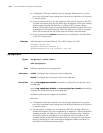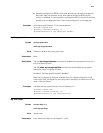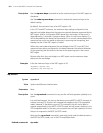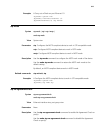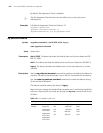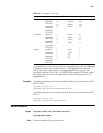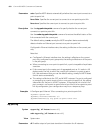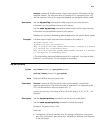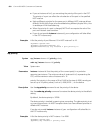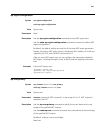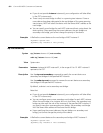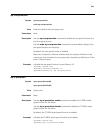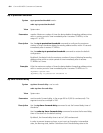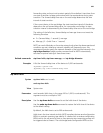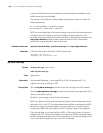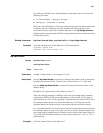
620 CHAPTER 38: MSTP CONFIGURATION COMMANDS
■ If you set instance-id to 0, you are setting the priority of the port in the CIST.
The priority of a port can affect the role selection of the port in the specified
MST instance.
■ Setting different priorities for the same port in different MST instances allows
different VLAN traffic flows to be forwarded along different physical links, thus
to enable per-VLAN load balancing.
■ When the priority of a port is changed, MSTP will re-compute the role of the
port and initiate a state transition.
■ If you do not provide instance instance-id, your configuration will take effect
in the CIST instance only.
Examples # Set the priority of port Ethernet 1/3 in MST instance 2 to 16.
<Sysname> system-view
[Sysname] interface Ethernet 1/3
[Sysname-Ethernet1/3] stp instance 2 port priority 16
stp priority
Syntax stp [ instance instance-id ] priority priority
undo stp [ instance instance-id ] priority
View System view
Parameters instance instance-id: Sets the priority of the current port(s) in a particular
spanning tree instance. The minimum value of instance-id is 0, representing the
CIST, and the maximum value of instance-id is 15.
priority: Port priority, in the range of 0 to 61440 at the step of 4096, namely you
can set up to 16 priority values, such as 0, 4096, 8192..., on the device.
Description Use the
stp priority command to set the priority of the device.
Use the undo stp priority command to restore the device priority to the default
setting.
By default, the device priority is 32768.
The device priority is involved in spanning tree computing. The device priority is set
on a per-instance basis. An MSTP-compliant device can have different priorities in
different MST instances.
If you do not provide instance instance-id, your configuration will take effect in
the CIST instance only.
Examples # Set the device priority in MST instance 1 to 4096.
<Sysname> system-view
[Sysname] stp instance 1 priority 4096



